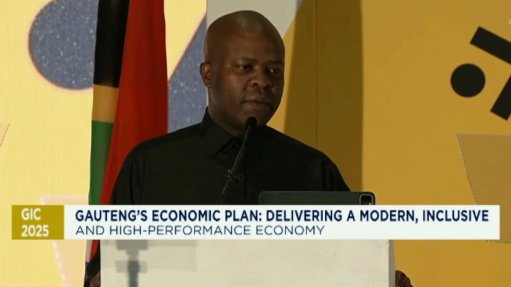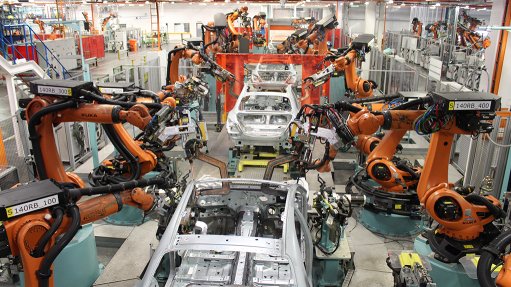South Africa construction sector requires ‘system-wide’ sustainability behavioural change
This article has been supplied and will be available for a limited time only on this website.
By: Thomas King - Partner at Pinsent Masons
In South Africa, the construction industry is a significant driver of carbon emissions with prevention, foresight, and proactivity required to address the challenges of sustainability across the sector
The National Business Initiative estimates that the construction sector contributes approximately 7% of South Africa’s direct scope 1 carbon emissions, 18% of indirect scope 2 emissions through energy use and material production, and a substantial amount of scope 3 supply chain emissions, which are more difficult to measure. If left unchecked, annual sector emissions could increase by up to 127% by 2050 due to rising infrastructure demand driven by population growth and social economic development.
South Africa's Climate Change Act, which came into effect on 17 March, aims to codify carbon reduction targets. However, important sections that would enforce compliance obligations have been suspended pending the development of enabling regulations. Operational efficiency compliance requirements exist, such as energy efficiency assessments mandated by the National Building Act, and the requirement for the mandatory display and submission of Energy Performance Certificates for buildings in terms of the National Energy Act, before December 2025. Whilst extensive policies and environmental laws are in place, the actual implementation of the Climate Change Act's provisions in particular is needed to trigger active decarbonisation efforts higher up the construction value chain.
In the meantime, in order to improve sustainability outcomes, the construction industry requires system-wide behavioural change drawing on international benchmarks, such as the IFC performance standards and Equator Principles which help global investors and lenders enter the regional market. It is also vital that all contributing sectors address issues and adopt sustainable, low-carbon practices. This requires insights into sustainability across the entire construction value chain, from raw material extraction to processing, transport, construction methods, site clearance and biodiversity rehabilitation, and resource management during the operational phase. South Africa's Just Energy Transition Implementation Plan, for instance, focuses on key sectors such as energy, mining, heavy industry, and transport, which are integral to the construction sector's sustainability.
Low-carbon construction projects also require a different approach to contracting. Traditional remedies for non-compliance, such as rectifying defects, are not feasible for breaches of low-carbon construction requirements because that would simply produce more embodied carbon. Therefore, parties must adopt contracting approaches that minimise the likelihood of non-adherence.
Considerations must start at procurement stage, with firms across the construction sector urged to develop clear technical specifications related to low-carbon construction requirements and, during the tender process, to allow tenderers a greater level of engagement to assess these specifications to ensure feasibility. It will also be important for businesses to adopt a collaborative contracting approach that enables parties to engage and minimise risks. This includes pre-construction regimes for discussing low-carbon requirements and incentive-based regimes to encourage compliance, rather than penalties for poor or non-performance.
As with all collaborative contracting models, active management is another key consideration. Contractors and developers should work to implement dynamic reporting obligations to monitor adherence to technical specifications. The contract must also include additional regimes to support project management, such as building information modelling (BIM). Active processes such as these are familiar to the local market which makes the learning curve less steep.
However, there are several issues to be conscious of in the context of the South African market, including regulatory structures. Many structures around the regulation of climate-conscious construction, methods of implementation, and ultimate impacts are largely unaligned and untested long-term. There are also practical implementation considerations: for instance, what may be practical or necessary to implement in one part of the world may not be the same for others, particularly in Africa, where economic, social, and technological coherence or skills may differ.
Additionally, global corporates, who often enter regional markets with local joint venture partners, are likely to be miles ahead of domestic medium to small companies. If smaller entities do not subscribe to the low-carbon commitments of larger corporates, they could find themselves out of work or struggling to catch up.
It is also important for construction companies to manage any risks that new ways of contracting and managing projects may bring. To mitigate these, firms should ensure that clear definitions of standards and expectations are set out in the contract. It is also crucial to consider the foreseeability of climate-related events, expecting the unexpected, and ensuring contract mechanisms are agile and adaptable enough to respond.
Sustainability and longevity of materials and methods of construction are key in the bid to reduce the construction sector’s emissions footprint, as are addressing any foreseeable supply chain issues. However, a shift in construction methodologies could lead to scarcity of materials, inflated costs, and unprepared manufacturing infrastructure.
Therefore, proactive management of climate change policies and agreed standards of good practice are essential. Clear measurable targets with incentives, regular monitoring, and reporting requirements will help ensure compliance and address discrepancies in a proactive and preventative manner.
Above all, with cross discipline collaboration the sustainability challenge can bring opportunity to the domestic construction sector which is set to thrive as South Africa builds out its ambitious infrastructure plans.
Comments
Press Office
Announcements
What's On
Subscribe to improve your user experience...
Option 1 (equivalent of R125 a month):
Receive a weekly copy of Creamer Media's Engineering News & Mining Weekly magazine
(print copy for those in South Africa and e-magazine for those outside of South Africa)
Receive daily email newsletters
Access to full search results
Access archive of magazine back copies
Access to Projects in Progress
Access to ONE Research Report of your choice in PDF format
Option 2 (equivalent of R375 a month):
All benefits from Option 1
PLUS
Access to Creamer Media's Research Channel Africa for ALL Research Reports, in PDF format, on various industrial and mining sectors
including Electricity; Water; Energy Transition; Hydrogen; Roads, Rail and Ports; Coal; Gold; Platinum; Battery Metals; etc.
Already a subscriber?
Forgotten your password?
Receive weekly copy of Creamer Media's Engineering News & Mining Weekly magazine (print copy for those in South Africa and e-magazine for those outside of South Africa)
➕
Recieve daily email newsletters
➕
Access to full search results
➕
Access archive of magazine back copies
➕
Access to Projects in Progress
➕
Access to ONE Research Report of your choice in PDF format
RESEARCH CHANNEL AFRICA
R4500 (equivalent of R375 a month)
SUBSCRIBEAll benefits from Option 1
➕
Access to Creamer Media's Research Channel Africa for ALL Research Reports on various industrial and mining sectors, in PDF format, including on:
Electricity
➕
Water
➕
Energy Transition
➕
Hydrogen
➕
Roads, Rail and Ports
➕
Coal
➕
Gold
➕
Platinum
➕
Battery Metals
➕
etc.
Receive all benefits from Option 1 or Option 2 delivered to numerous people at your company
➕
Multiple User names and Passwords for simultaneous log-ins
➕
Intranet integration access to all in your organisation


















